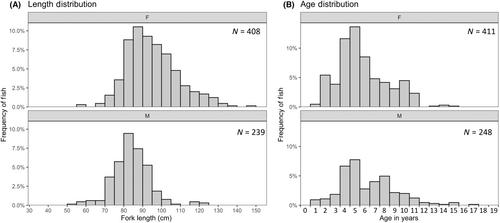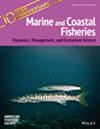Temporal and spatial variation in growth can have significant implications for the assessment and management of exploited populations. Therefore, the age and growth of King Mackerel Scomberomorus cavalla were estimated for the western Gulf of Mexico, where there are large gaps in the available data.
A total of 727 sagittal otoliths from 411 females, 248 males, and 68 individuals of unknown sex were collected from headboats, private recreational anglers, tournaments, and fishery-independent sampling and aged.
Ages ranged from 0 to 17 years with lengths ranging from 13 to 147 cm fork length. The distribution of lengths and ages differed marginally for fishing sector (i.e., tournament vs. headboat vs. private). The fish that were collected from tournaments were larger than those collected from headboats and private anglers. The distribution of lengths and ages did vary by sex, with females obtaining larger sizes than males. However, there was no difference in mean age by sex. Using the multimodel approach, the Richards model improved the fit for both the youngest and oldest fish in the sample relative to the other growth models that were evaluated. Sex-specific differences in the Richards model were detected, with females growing larger than males but more slowly. Although peak catch was observed at age 5, King Mackerel were not fully recruited to the recreational fishery until age 6. The Chapman-Robson Peak Plus estimate of Z was 0.37.
These data provide a contemporary snapshot of size structure, age, growth, and mortality for King Mackerel from an undersampled region of the Gulf of Mexico and highlight several key considerations for upcoming stock assessments.



